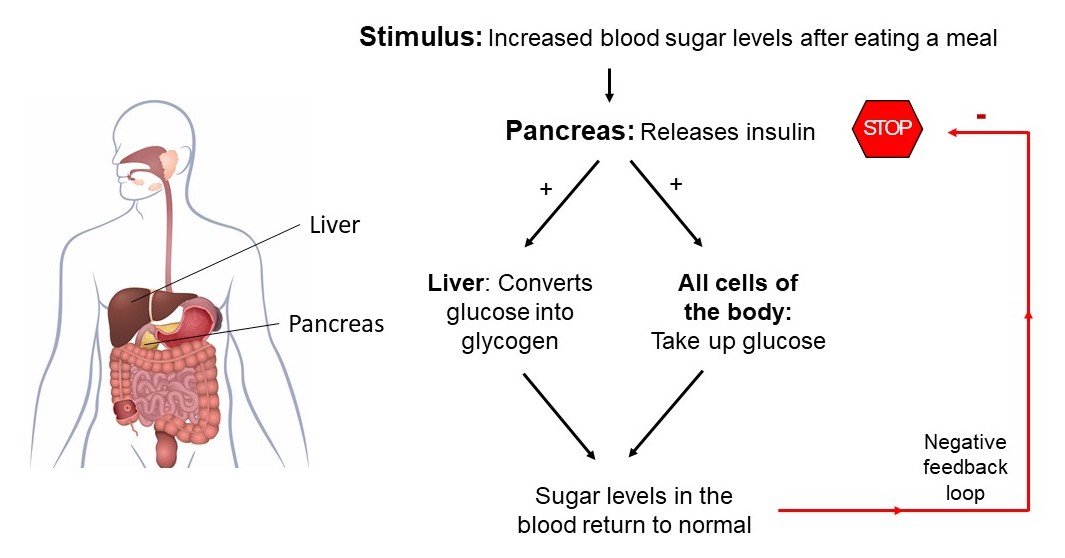Location of the pancreas
The pancreas is a long gland that sits behind the stomach and under the liver. It is about 25 cm long and is connected to the duodenum (the first part of the small intestine) by a small duct.
Functions/Roles of the pancreas
The pancreas is an endocrine and exocrine gland. An exocrine gland is an organ that makes and releases chemicals into ducts, rather than into the blood stream like endocrine glands.
As an endocrine gland, the main function of the pancreas is to make hormones that control blood sugar levels. These hormones are made in clusters of cells called ‘islets of Langerhans’.
Keeping blood sugar levels stable is important to provide a constant energy supply to the body. Low blood sugar levels can cause sweating, shaking, mood changes, confusion and in severe cases seizures and loss of consciousness. Persistently high blood sugar levels are a feature of diabetes mellitus.
The remaining area of the pancreas has exocrine functions, producing chemicals (enzymes) that help digest food. These enzymes are transported through a small duct from the pancreas to the small intestine. These enzymes help break down proteins, carbohydrates and fats in food.
Keeping pancreatic hormones in balance
Insulin
Insulin is released from the pancreas when blood sugar (glucose) levels rise after a meal. Insulin causes glucose to move out of the blood into cells of the body, resulting in a fall in blood sugar levels. When blood sugar levels return to normal, the pancreas stops making insulin.
Glucagon
Glucagon is released from the pancreas when blood sugar (glucose) levels fall too low. When blood sugar levels return to normal, the pancreas stops making glucagon. Glucagon is also released in response to adrenaline.
Somatostatin
Somatostatin blocks the production of insulin and glucagon to help regulate blood sugar levels. Somatostatin increases when either glucagon or insulin levels get too high.
Common Problems / Disorders of the Pancreas

Type 1 Diabetes Mellitus

Type 2 Diabetes Mellitus

Gestational Diabetes

Pre-diabetes
(Impaired glucose tolerance or Impaired fasting glucose)

Hyperglycaemia

Hypoglycaemia
Page last reviewed on 2 Mar 2023


